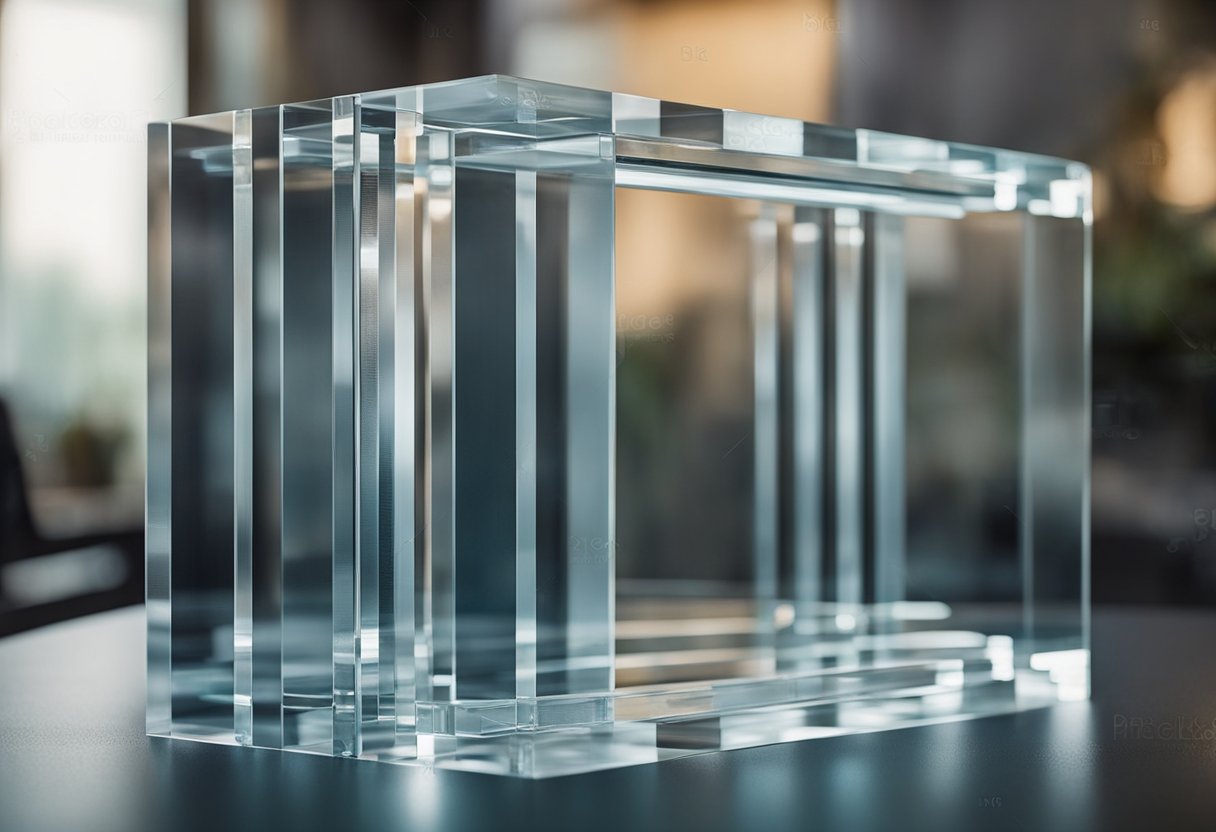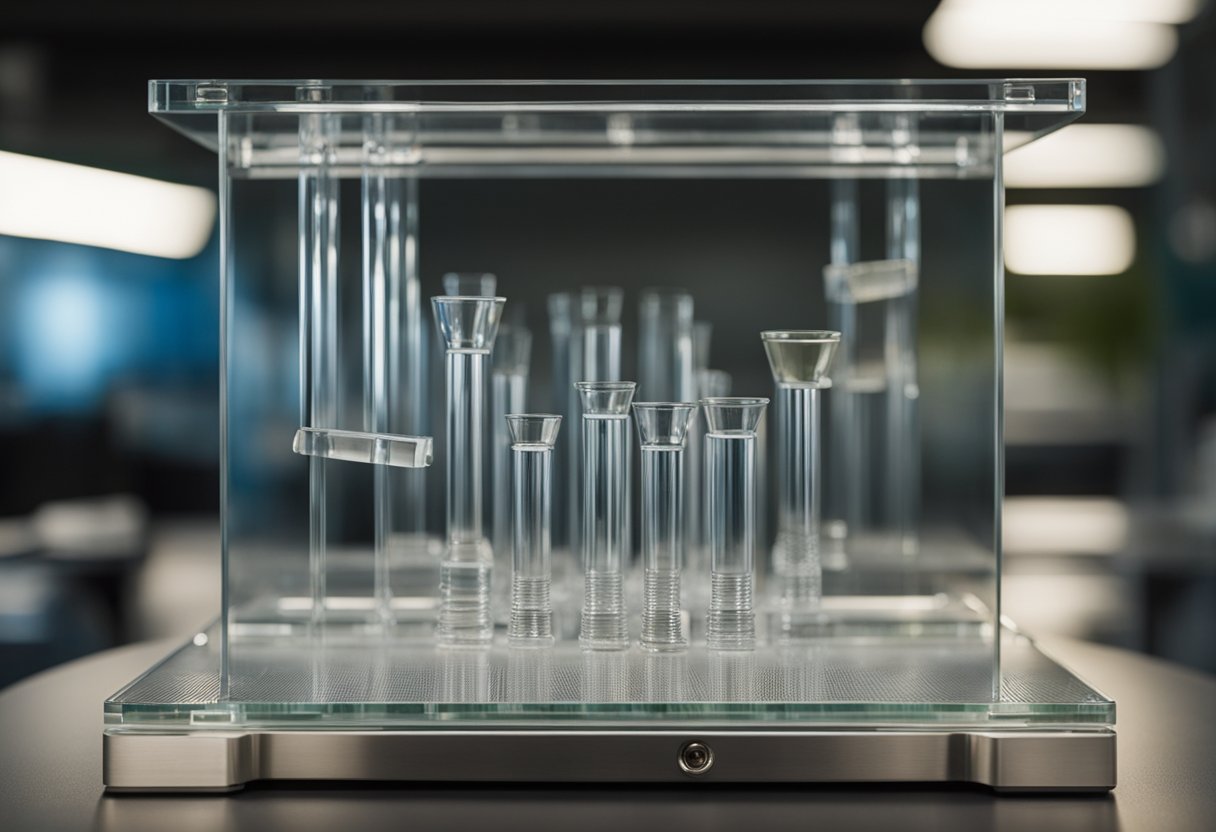Plexiglass, also known as acrylic glass or PMMA, is a popular alternative to traditional glass due to its strength, durability, and versatility. It is widely used in various applications, including windows, skylights, aquariums, and protective barriers. However, one of the most common questions people have about plexiglass is how much weight it can hold. In this article, I will explore the weight capacity of plexiglass, the factors that influence its strength, and practical applications of this material.
Understanding plexiglass is essential to determine its weight capacity. Plexiglass is a type of thermoplastic that is made from polymethyl methacrylate (PMMA). It is lightweight, shatter-resistant, and has excellent optical clarity. The weight capacity of plexiglass depends on its thickness, size, and shape. Thicker plexiglass sheets can generally hold more weight than thinner ones, while larger sheets may require additional support to prevent sagging or bending. Additionally, the shape of the plexiglass sheet can affect its weight capacity, with flat sheets being more stable than curved or angled ones.
Key Takeaways
- Plexiglass is a strong, durable, and versatile material that is widely used in various applications.
- The weight capacity of plexiglass depends on its thickness, size, and shape.
- Factors that influence plexiglass strength include temperature, humidity, and exposure to UV radiation.
Understanding Plexiglass
Plexiglass is a type of acrylic plastic that is commonly used as an alternative to glass due to its strength, durability, and clarity. It is a lightweight material that is easy to work with, making it a popular choice for a wide range of applications.
One of the key advantages of plexiglass is its load-bearing capacity. Despite being half the weight of glass, plexiglass is up to eleven times sturdier, making it ideal for use in applications where high pressure is expected. For example, it can withstand snow loads on roofs, wind pressure on vertical glazing, and water pressure in aquariums [1].
Another advantage of plexiglass is its general-purpose acrylic material. It is available in a variety of thicknesses, ranging from 0.06 inches to 4 inches. The thicker the plexiglass, the more weight it can support. A 1/4 inch thick plexiglass sheet can support approximately 20 pounds per square foot [2].
Plexiglass is also known for its clarity. It is a transparent material that allows light to pass through, making it an ideal choice for applications where visibility is important. Unlike glass, plexiglass is shatter-resistant, making it a safer option in environments where breakage is a concern.
Overall, plexiglass is a versatile material that offers a range of benefits, including load-bearing capacity, durability, and clarity. It is an excellent alternative to glass in many applications and is widely used in industries such as construction, automotive, and aerospace.
Weight Capacity of Plexiglass
https://www.youtube.com/watch?v=P8eblEGN7go&embed=true
As a material, plexiglass is known for its strength and durability. However, it is important to understand its weight capacity to ensure that it can support the intended load.
The weight capacity of plexiglass depends on various factors such as the thickness of the sheet, the size of the sheet, and the type of load it will be subjected to. A thicker sheet of plexiglass can generally support more weight than a thinner sheet. Additionally, a larger sheet of plexiglass may not be able to support as much weight as a smaller sheet of the same thickness due to the increased surface area.
To calculate the weight capacity of a plexiglass sheet, it is important to use the correct formula or calculator. There are various online calculators available that can help estimate the load-bearing capacity of plexiglass sheets based on their thickness and size. For example, the Acrylic Load Calculator can provide an estimation of the weight tolerance of plexiglass sheets based on their thickness.
It is important to note that the weight capacity of plexiglass is not only determined by the sheet itself but also by the method of installation and the type of support used. A poorly installed plexiglass sheet or inadequate support can compromise its weight capacity and lead to failure.
In summary, the weight capacity of plexiglass is an important factor to consider when using it for load-bearing applications. The thickness and size of the sheet, as well as the method of installation and support, should be taken into account when estimating its weight capacity. Using a reliable formula or calculator can help ensure that the plexiglass sheet can support the intended load safely and effectively.
Factors Influencing Plexiglass Strength
As a material, Plexiglass is known for its strength, durability, and versatility. However, several factors can impact its strength and load-bearing capacity. Understanding these factors is essential when choosing the right Plexiglass sheet for your project.
Thickness
The thickness of the Plexiglass sheet is a critical factor in determining its strength. The thicker the sheet, the more weight it can bear. For instance, a 1/4-inch thick sheet of Plexiglass can hold up to 10 pounds per square foot, while a 1/2-inch thick sheet can hold up to 20 pounds per square foot. So, when choosing a Plexiglass sheet, it is essential to consider the weight it will bear and choose a sheet of appropriate thickness.
Environmental Conditions
Environmental conditions such as temperature, humidity, and exposure to sunlight can impact the strength of Plexiglass sheets. For instance, prolonged exposure to sunlight can cause Plexiglass to become brittle and lose its strength over time. Therefore, it is crucial to consider the environmental conditions to which the Plexiglass sheet will be exposed and choose a sheet that can withstand those conditions.
Impact Resistance
Plexiglass sheets are known for their impact resistance, which is the ability to withstand sudden impacts without breaking. The impact resistance of Plexiglass is influenced by factors such as sheet thickness, size, and age. Thicker and larger sheets of Plexiglass tend to have higher impact resistance than thinner and smaller sheets. Additionally, older sheets of Plexiglass may have reduced impact resistance due to wear and tear.
Tensile Strength
Tensile strength is the maximum stress that a material can withstand before breaking under tension. The tensile strength of Plexiglass is influenced by factors such as density and environmental conditions. Higher density sheets of Plexiglass tend to have higher tensile strength than lower density sheets. Additionally, exposure to environmental conditions such as sunlight and extreme temperatures can impact the tensile strength of Plexiglass sheets.
In conclusion, the strength of Plexiglass is influenced by several factors, including thickness, environmental conditions, impact resistance, and tensile strength. When choosing a Plexiglass sheet for your project, it is essential to consider these factors to ensure that you select a sheet that can withstand the intended load and environmental conditions.
Plexiglass vs Other Materials
When it comes to choosing a material for a project, weight is a major consideration. Glass is a popular choice, but it is heavy and fragile. Shipping glass can also be costly due to its weight. On the other hand, plexiglass is much lighter than glass and can hold a considerable amount of weight. In fact, plexiglass is eleven times sturdier than glass, making it a great alternative to glass.
Polycarbonate is another material that is often used as an alternative to glass. While it is lighter than glass, it is not as strong as plexiglass. In terms of weight, polycarbonate is slightly lighter than plexiglass, but it cannot hold as much weight.
ABS is a plastic material that is often used in manufacturing. It is lightweight and strong, but it is not transparent like plexiglass. When it comes to weight, ABS is lighter than plexiglass, but it cannot hold as much weight.
Overall, plexiglass is a great alternative to glass and other materials when weight is a major consideration. It is lighter than glass, stronger than polycarbonate, and more transparent than ABS. If you need a material that can hold a lot of weight without adding too much weight to your project, plexiglass is definitely worth considering.
Practical Applications of Plexiglass
I have researched the practical applications of plexiglass and found that it is a versatile material that is widely used in various industries. Here are some of the practical applications of plexiglass:
Windows and Displays
Plexiglass is a popular material for windows and displays due to its transparency and durability. It is commonly used in aircraft windows, car windows, and storefront displays. It is also a preferred material for museum exhibits, trade show displays, and signage due to its lightweight and shatter-resistant properties.
Construction
Plexiglass is a popular material in construction due to its durability and resistance to weathering. It is used in roofing, skylights, and canopies. It is also used in sound barriers and partitions due to its noise reduction properties.
Aquariums
Plexiglass is a popular material for aquariums due to its clarity and strength. It is commonly used in large public aquariums and private home aquariums. The thickness of the plexiglass used in aquariums varies depending on the size of the tank and the water pressure.
Project and DIY
Plexiglass is a popular material for project and DIY enthusiasts due to its versatility and ease of use. It can be cut, drilled, and shaped easily, making it ideal for a wide variety of projects. It is commonly used in picture frames, lampshades, and jewelry displays.
Overall, plexiglass is a reliable material that can be used in a wide range of applications. Its strength and durability make it a popular choice for industries ranging from construction to aquariums.
Safety and Quality Considerations
When it comes to choosing the right material for your project, safety and quality should always be top priorities. Plexiglass is a popular choice for its shatter-resistant properties, but it’s important to note that it can still crack under pressure. That’s why it’s crucial to determine the load-bearing capacity of your plexiglass sheets before using them.
In addition to load-bearing capacity, it’s also important to consider the quality of the plexiglass you’re using. Over time, plexiglass can yellow due to exposure to UV light, which can affect the overall appearance of your project. To prevent this, it’s recommended to choose high-quality plexiglass that is designed to resist yellowing.
Another important consideration is the health and fitness of those who will be using your project. Some types of plexiglass may contain harmful chemicals, so it’s important to choose products that are certified safe for use. Look for plexiglass that meets industry standards for safety and quality, and be sure to follow manufacturer guidelines for installation and maintenance.
Overall, choosing the right plexiglass for your project requires careful consideration of factors such as load-bearing capacity, quality, and safety. By taking these factors into account, you can ensure that your project is both functional and visually appealing, while also promoting the health and well-being of those who will be using it.
Purchasing and Using Plexiglass
When purchasing plexiglass, it is important to consider the intended use and weight-bearing capacity required. As we have seen from our research, plexiglass can support a significant amount of weight depending on its thickness and size. It is essential to choose the right thickness of plexiglass to ensure it can safely support the desired weight.
When using plexiglass, it is important to handle it carefully to prevent scratches or cracks. Plexiglass can be cut to size using a saw or scored and snapped along a straight line. It is also possible to drill holes in plexiglass using a drill bit designed for use with plastic. It is recommended to wear eye protection and gloves when handling plexiglass to prevent injury.
In terms of cost, plexiglass is generally more expensive than traditional glass but offers several advantages such as being shatter-resistant and lightweight. The cost of plexiglass varies depending on the size, thickness, and quality of the product. It is important to consider the cost when choosing the right product for your needs.
When purchasing plexiglass, it is important to check the warranty information provided by the manufacturer. Some manufacturers offer a warranty against defects or breakage, which can provide peace of mind when using the product.
In summary, when purchasing and using plexiglass, it is important to consider the intended use, weight-bearing capacity, cost, warranty information, and handling procedures. By following these recommendations, you can ensure that you are using plexiglass safely and effectively.
Frequently Asked Questions
What is the maximum weight capacity of plexiglass sheets?
Plexiglass is a strong and durable material that can hold a significant amount of weight. According to PLEXIGLAS®, the load-bearing capacity of multi-skin, corrugated, and solid sheets depends on various factors, including the sheet thickness, the distance between the supports, and the type of load. It is important to note that the load capacity of plexiglass decreases as the sheet thickness decreases.
How much weight can an acrylic shelf hold?
The weight capacity of an acrylic shelf depends on various factors, including the shelf size, the thickness of the acrylic sheet, and the type of load. According to CGAA, standard width glass shelving can support a weight load of up to 25 pounds per shelf, while glass shelving with angled supports can support up to 50 pounds per shelf. However, it is important to note that plexiglass is not as strong as glass and may not be suitable for heavy loads.
How thick does plexiglass need to be to support a load?
The thickness of plexiglass required to support a load depends on various factors, including the weight of the load, the distance between the supports, and the type of load. According to Acrylic Load Calculator, a 1/4 inch thick acrylic sheet can support approximately 20 pounds per square foot. However, it is recommended to consult an expert to calculate the sheet thickness required for a specific load.
What is the weight limit for load bearing plexiglass?
The weight limit for load-bearing plexiglass depends on various factors, including the sheet thickness, the distance between the supports, and the type of load. According to CGAA, plexiglass can hold a significant amount of weight due to its stiffness and high Young’s modulus. It is often used in the construction of bullet-proof windows. However, it is important to note that plexiglass is not as strong as glass and may not be suitable for heavy loads.
How strong is 6mm acrylic sheet?
A 6mm acrylic sheet is relatively strong and can hold a significant amount of weight. According to CGAA, the weight capacity of plexiglass depends on various factors, including the sheet thickness, the distance between the supports, and the type of load. It is important to note that the load capacity of plexiglass decreases as the sheet thickness decreases.
Does plexiglass break easily under weight?
Plexiglass is a strong and durable material that can withstand a significant amount of weight. However, it is important to note that plexiglass is not as strong as glass and may not be suitable for heavy loads. According to Dreamlands Design, plexiglass is almost half the weight of glass and can resist chemical attacks. It is often used in residential homes for designing kitchen backsplash and cabinets.

Hi, I’m Sal Muller of Tooltrip.com. My DIY experience led me to understand essential power tools for home projects. Tooltrip.com guides enthusiasts and professionals in choosing right tools for any job. I provide concise top tool reviews for easier, efficient DIY.









